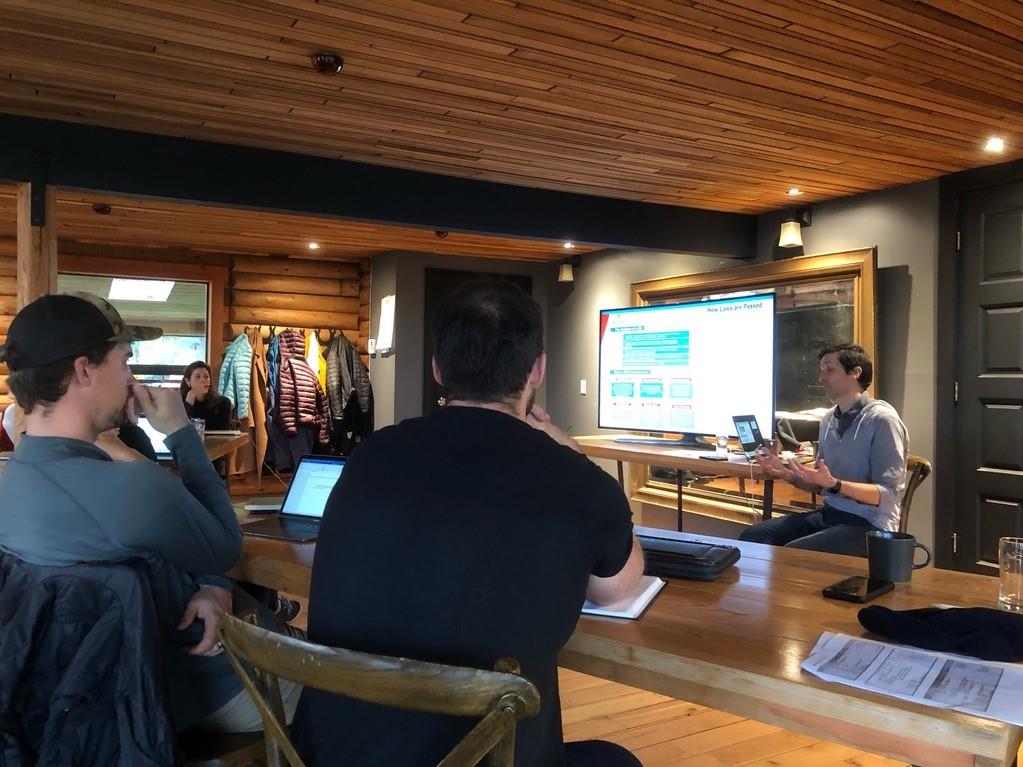
Professor Martin Olszynski recently led a two-day legal workshop for the Liber Ero Fellowship Program.
Nov. 30, 2021
When it comes to environmental law and policy, some things are just too important to trust to the lawyers.
The relationship between science, law and policy is one that is often full of tension, especially when it comes to matters of protecting the environment and the sustainable development of our natural resources. It is this tension that Professor Martin Olszynski hopes to ease after leading a two-day workshop and in the development of a new course.
Olszynski, who has an undergraduate degree in science and spent several years practicing law in the legal services unit at Fisheries and Oceans Canada, spent two days on Galiano Island, BC earlier this month leading a legal workshop for the Liber Ero Fellowship Program, a post-doctoral program that seeks to support exceptional early-career scientists to conduct and communicate research that informs applied conservation and management issues relevant to Canada.

Professor Martin Olszynski recently led a two-day legal workshop for the Liber Ero Fellowship Program.
“It’s important for both lawyers and scientists to understand the rules of engagement: which level of government is responsible for which environmental issues, or how science is sometimes considered and scrutinized by Canadian courts, and other times not,” he explains. “My goal is to help bridge the gap and explain what can otherwise get lost in translation between scientists and lawyers.”
Workshops such as this are important because a misunderstanding of science can lead to significant problems with applicable legal doctrines. One example that Olszynski has spent a lot of time thinking about is the ubiquitous invocation on “adaptive management” in the natural resources development context. Adaptive management is supposed to be an experimental approach to resource management with the goal of learning and improvement, but a failure to understand its science-based limitations has led to misuse and abuse. Bridging the gap between science and law can help improve the development of laws and legislation at the federal, provincial, and municipal levels, as well as in Indigenous law.
“From the Canadian Navigable Waters Act to the Impact Assessment Act to the Species at Risk Act, science, law and policy are tightly intertwined. Understanding the rules, concepts and ideas from both disciplines is important to ensure that legislation, regulations, and policies can reasonably be expected to accomplish their objectives.”
In the future, Olszynski hopes to develop a course where law students and science students can come together to work on real-life problems, such as writing a brief to a parliamentary committee or a submission to a project review panel, which will allow students to gain a stronger understanding of the intricacies of both law and science, and how they can successfully work together.